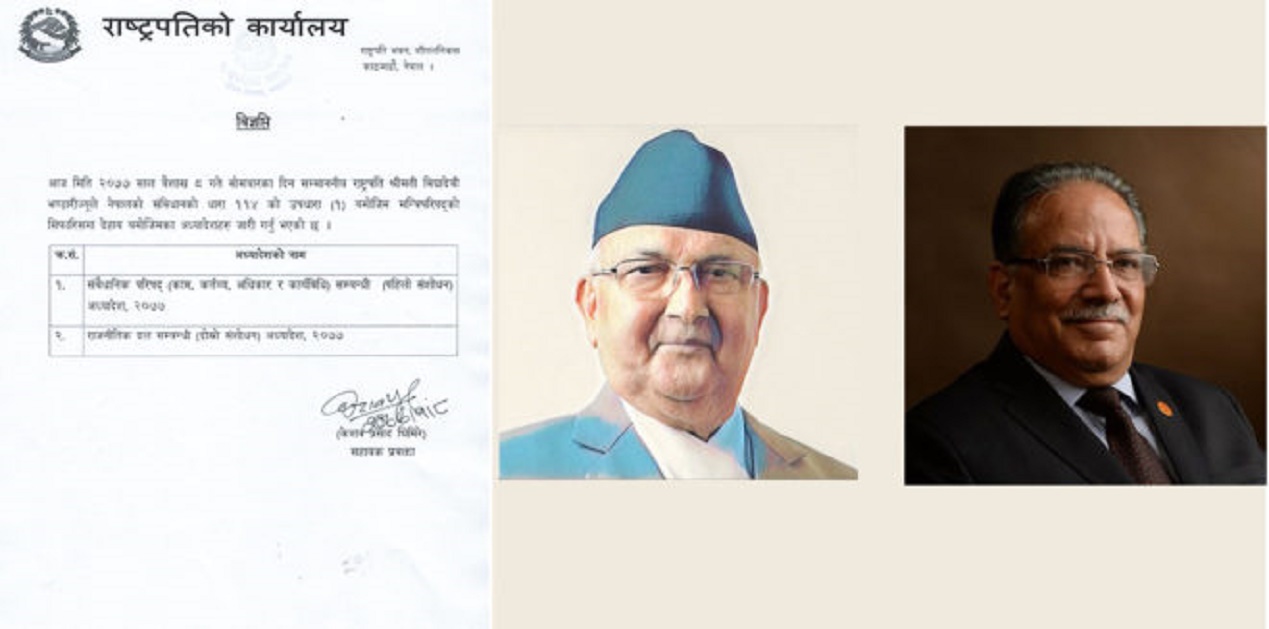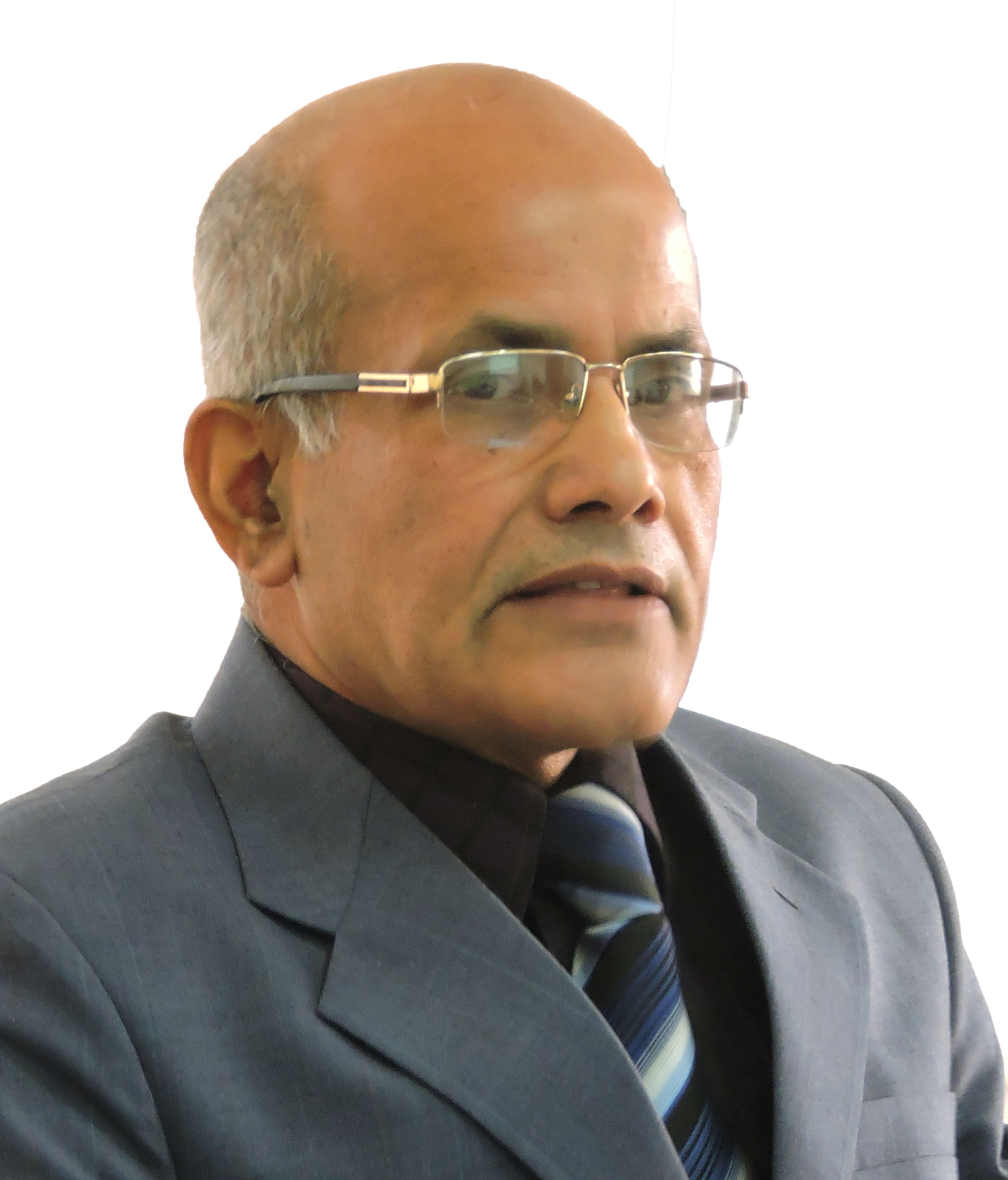At a time when almost all the countries of the world are struggling to fight the corona virus pandemic, the Council of Ministers in Nepal brought in two important ordinances on April 20, 2020, that could have serious implications on the future of Nepalese politics. One of the ordinances related to splitting of political parties and the other was about amending the procedure for filling up the posts in the Constitutional Council. President Bidya Devi Bhandari immediately accorded Presidential approval to both the ordinances.
In the new ordinance related to splitting of the political parties, a new provision has been made whereby a political party can be split if the move had the support of at least 40 per cent of the members of either the central committee members in the party or of the parliamentary party. Earlier, the requirement for splitting a political party was to have at least 40 per cent support both in the central committee and also in the parliamentary party. Basically, it amounts to a huge dilution, making it significantly easier to split any political party.
As regards the other amendment covering appointments to the Constitutional Council, it was earlier contemplated that there would be representation of the opposition parties in this five-member body charged with deciding appointments to some of the very powerful positions in the country. But with the amendment introduced through the ordinance, the government could make political appointments on the majoritarian principle without any check from the opposition party.
In political circles, it was feared that the ordinance related to splitting of political parties was brought to split the Federal Socialist Party, Nepal (FSPN). In this regard, an MP from this party was even reported to have been abducted. However, the effort to split the opposition parties, like that of FSPN, backfired.
Surprisingly, just within a few hours after the ordinance related to splitting the party was brought, the FSPN and the Rastriya Janata Party, Nepal (RJPN), unified, announcing the formation of a new party named Janata Samajbadi Party (JSP). Within a day, leaders of the two parties even submitted all the needed documents to the Election Commission of Nepal for the registration of the new party.
It was not a matter of choice rather than a compulsion for the FSPN and RJPN, which have their support base mainly in the Terai region, to hasten to unify. The leaders of the two parties had been discussing for a long time for the merger of the two parties, but that did not materialize because of the ego of certain leaders. But this time, any delay in the unification of the two parties could have invited disaster as preparation had already been made by certain quarters to split these parties with the support of 40 per cent of the members of the parliamentary party.
Since both these ordinances were introduced without prior proper consultation within the ruling Communist Party of Nepal (CPN), several senior leaders of the party vehemently criticized these moves. The tide of dissatisfaction within the ruling party peaked to such an extent that even voices were raised for the resignation of PM Oli.
Opposition parties too, led by the Nepali Congress (NC) and including Federal Socialist Party Nepal (FSPN), Rastriya Janata Party Nepal (RJPN) and Rastriya Prajatantra Party (RJP) not only criticized the government for bringing in these controversial changes through the ordinance route, they also threatened to launch a movement in case these were not repealed. The civil society and media were equally critical to the new ordinances.
Under the growing pressure within the ruling CPN and the opposition political parties, both the ordinances concerning splitting the party along with that of the Constitutional Council were withdrawn within four days of their introduction on April 24, 2020.
Nevertheless, the political upheaval brought by the new ordinances has not stopped. Infighting within the rival groups in the ruling CPN has further intensified. At times it appeared that there would be the change of guard both in the ruling party as well as in the government. But at the eleventh hour, certain external forces seem to have become active in diffusing the crisis in the ruling party. Thereafter, the ruling party leaders miraculously came to terms.
Apart from the political consideration and implications of the two ordnances, people were also critical of the timing of the move when the country had already started facing the heat of fast spreading COVID-19 pandemic. With 75 people testing positive as on May 4, 2020, the pandemic is fast spreading its net. Though no one has yet died in the country, atleast 73 Nepalese living abroad in foreign countries have already succumbed to the infection and more than 2000 people are under treatment for the infection.
The government is also under pressure from the Gulf countries, where nearly 1.5 million Nepalese labour force have been working, bring back its workers. On top of all this, thousands of informal sector workers within the country have already lost their jobs during the lockdown. The tourism industry has come to standstill; while manufacturing industries are virtually closed down. Agricultural activities are also adversely affected. As a result of all these, unemployment situation in the country has worsened. Because of the all-round economic crisis created by the lockdown, poor people have been trying to even walk on foot over hundreds of kilometers with their families to get back home.
At such a critical juncture when the need of the hour was to focus on ways and means of unitedly facing the corona virus crisis, it was shocking that elements of the ruling party were trying to create a climate of chaos in the country merely to serve their vested interests.
With the political crisis in the country averted at least for the time being, it is imperative for the government and the different political parties in the country to join hands together in their fight against COVID-19. They need to evaluate the impacts of different measures that the government has introduced so far to face the crisis and develop suitable strategies for the future.
Finally, the government needs to make the Master Plan to ensure rebounding of the economy. For this, a major exercise needs to be made to generate employment opportunities on a massive scale, especially for the poor. Since the agricultural sector still engages over 70 per cent of the labour force in the country, the farming sector needs to be given top priority both for increasing production and productivity of the agricultural sector and also for generating employment opportunities. Besides, skilling of the labour force in different industrial sectors and engaging them in units under Public-private Partnership schemes also needs to be duly considered.
(The paper is the author’s individual scholastic articulation. The author certifies that the article/paper is original in content, unpublished and it has not been submitted for publication/web upload elsewhere, and that the facts and figures quoted are duly referenced, as needed, and are believed to be correct). (The paper does not necessarily represent the organisational stance... More >>
Image Source: http://nepalesevoice.com/wp-content/uploads/2020/04/aawaaj-660x330.jpg











Post new comment